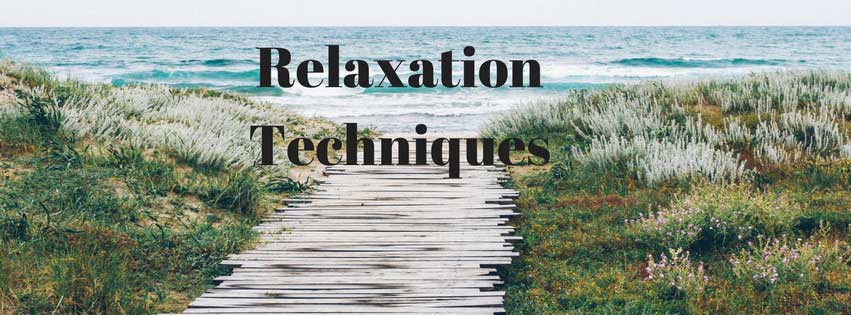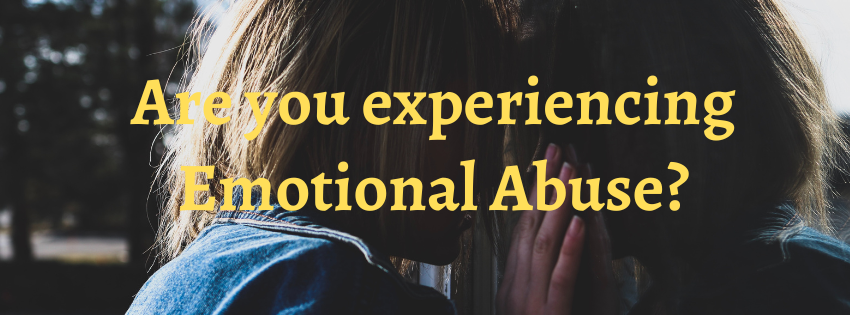Emotional abuse can have a profound impact on women and leave deep scars that last…

Simple Relaxation Techniques That Work
The ability to recognize how your body reacts to stress can be a powerful skill. Most people are more aware of the weather or the time of day than they are aware of the tension in their bodies or their personal reaction to stress. Your body responds to stress long before your conscious mind does. Muscle tension is your body’s way of letting you know that you are under stress, and body awareness is the first step toward acknowledging and reducing stress.
External awareness includes all physical information you receive from the outside world such as noises you hear, things you see and smells you notice. Internal awareness refers to any physical sensation or emotional discomfort inside your body. Such sensations may include a knot in your stomach when you are worried, tense shoulders when you are stressed or clenched fists when you get angry. Often we don’t even notice much of our body tension because most of our attention tends to be directed towards the outside world. In this way we miss vital information about what is going on with us internally and hence we fail to respond accordingly. This is why learning to differentiate between your external and internal awareness in order to separate the world from your physical reaction to it is important.
How To Increase Internal vs External Awareness
Start by focusing your attention on the outside world with your eyes closed and try to engage all your senses. You may do this by saying to yourself “I am aware of …” or “I can hear …, I can see … and I can smell …” (For example, “I am aware of the cars going by, a clock ticking, a light breeze blowing, and the feel of the chair underneath me.”) I often advise my clients to imagine being a blind detective that needs to gather as much information as possible about their surroundings while their eyes are closed.
After you have become aware of everything that is going on around you, shift to focusing your attention on your body and your physical sensations—your internal world. For example, you may say to yourself “I am aware of tension in my neck and shoulders, my jaw being clenched and the tips of my fingers feeling damp and sweaty”.
Once you have established all there is to note about your physical sensations, shift again your attention to the outside world for a couple of minutes. Do this attention switching 3-4 times. When you finish the exercise, ask yourself: How did you feel in each state? Were you more relaxed while focused on your inner or outer world? Did you pick up any physical sensations you weren’t previously aware of? Did you notice more things about your environment that you hadn’t picked up before?
The Importance of Breathing for Relaxation
Chest breathing is often associated with anxiety or other emotional distress. It is also common in people that don’t get much exercise or lead stressful lives. Chest breathing is shallow and often irregular and rapid. When air is inhaled, the chest expands and the shoulders rise to take in the air. When you become anxious, you may experience breath holding, hyperventilation, or shortness of breath. If an insufficient amount of air reaches your lungs, your blood is not properly oxygenated, your heart rate and muscle tension increase, and your stress response is turned on.
Abdominal (or belly) breathing is the natural breathing of newborn babies and sleeping adults. Inhaled air is drawn deep into the lungs and exhaled as the diaphragm contracts and expands. Breathing is deeper, even and non-constricting. Your respiratory system is able to do its job of producing energy from oxygen and removing waste products.
By increasing awareness of your body and shifting to a more abdominal breathing, you can reduce muscle tension and anxiety.
Deep Breathing Exercise
- Although this exercise can be practiced in a variety of poses, the following is recommended: Lie down and bend your knees, moving your feet slightly apart. Place one hand on your belly and one hand on your chest.
- Inhale slowly and deeply through your nose into your abdomen to push up your hand as much as feels comfortable. Your chest should move only a little and only with your abdomen. Exhale through your mouth, making a quiet, relaxing, whooshing sound as you blow gently out. Your mouth, tongue, and jaw should be relaxed.
- Concentrate on your abdomen moving up and down, the air moving in and out of your lungs, and the feeling of relaxation that deep breathing gives you.
- Imagine that energy is rushing into your lungs with each incoming breath of air and that this energy is flowing out to all parts of your body with each exhalation. Form a mental picture of this energizing process.
- At the end of each deep-breathing session, take a little time to once more scan your body for tension. Compare the tension you feel at the conclusion of the exercise with that which you experienced when you began.
Calm Breathing Exercise:
- Ensure that you are sitting on a comfortable chair or laying on a bed
- Take a breath in for 4 seconds (through the nose)
- Hold the breath for 2 seconds
- Exhale for 6 seconds (through the mouth) then pause slightly before breathing in again.
“I Am Here . . . I Am Calm”
- With this exercise, as you breathe in, you say to yourself, “I am here.” As you breathe out, you say, “I am calm.”
- “I am here” is shorthand for the longer sentence “I am here in the present moment without judgment.” This sentence means “As I am breathing, I am not thinking about the past, and I am also not anticipating the future; I’m residing in the present moment.”
- “Without judgment” means “I am suspending judgment right now about myself and others. I am taking a complete break, a vacation, from criticizing myself and other people.”
Breath Counting Exercise:
- As you exhale, count “1” to yourself. As you continue to inhale and exhale, count each exhalation: “2…3…4.”
- Continue counting your exhalations in sets of four for five to ten minutes.
- Notice your breathing gradually slowing, your body relaxing, and your mind calming as you practice this breathing meditation.



